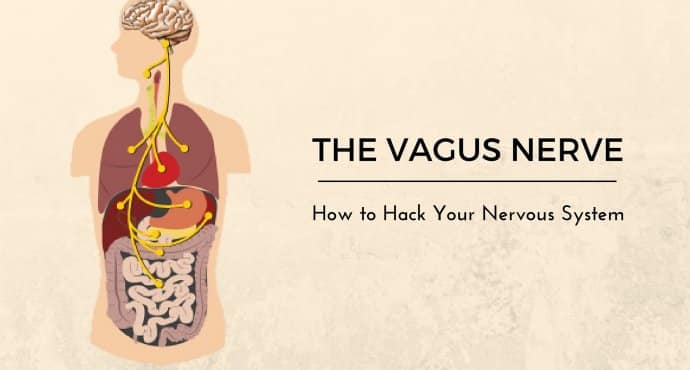The Special Nerve that Connects all of Your Vital Organs and Why It’s So Important
The vagus nerve starts in the brainstem, just behind the ears. It travels down each side of the neck, across the chest and down through the abdomen. “Vagus” is Latin for wandering, and indeed, this bundle of nerve fibers moves through the body, networking the brain with the stomach and digestive tract, lungs, heart, spleen, intestines, liver, and kidneys. This doesn’t include the connection to a range of other nerves that are involved in speech, eye contact, facial expressions and even our ability to tune into other people’s voices.
 The vagus nerve is made of thousands of nerve fibers and 80 percent of them are sensory, meaning the nerve reports back to your brain what is happening in your organs. Operating below the level of our conscious minds, the vagus is vital for keeping our bodies healthy. It is essential to the parasympathetic nervous system, which is responsible for calming organs after the stressed “fight or flight” response to danger. Not all vagus nerves are the same though. Some people have stronger vagus activity, and this means their bodies can relax faster after stress.
The vagus nerve is made of thousands of nerve fibers and 80 percent of them are sensory, meaning the nerve reports back to your brain what is happening in your organs. Operating below the level of our conscious minds, the vagus is vital for keeping our bodies healthy. It is essential to the parasympathetic nervous system, which is responsible for calming organs after the stressed “fight or flight” response to danger. Not all vagus nerves are the same though. Some people have stronger vagus activity, and this means their bodies can relax faster after stress.
The strength of your vagus response is known as your vagal tone. Research shows that a higher vagal tone makes your body better at regulating blood glucose levels, reducing the likelihood of diabetes, stroke and cardiovascular disease. Low vagal tone has been associated with chronic inflammation.
As part of the immune system, inflammation has a useful role helping the body to heal after an injury; however, it can damage the body if it persists when it is no longer needed. One of the vagus nerve’s jobs is to reset the immune system and switch off production of molecules that stimulate inflammation. Low vagal tone means this regulation is less effective and inflammation can become excessive and chronic.
The vagus nerve acts as a two-way messenger between the brain and other organs. Because of the role of this nerve in a range of chronic inflammatory diseases, it has been studied as a possible treatment. The implications of being able to improve vagal tone are potentially enormous.
The interesting thing is that there are ways to improve the tone of the vagus nerve. One of the easiest and cheapest ways is to perform deep breathing so that you are activating the diaphragm. You can also take time to socialize and laugh with others. Meditation, singing, humming, chanting and gargling can stimulate the vagus nerve. Chiropractic care has also been shown to improve vagal tone.
If you or someone you love is chronically dealing with stress, it may be a good idea for them to get checked out by a chiropractor to make sure their nervous system is functioning well. It can improve their bodies response to stress and regulate inflammation. If located in Bucks County or Montgomery County, then Radiant Life Chiropractic of Hatboro would love to help!

